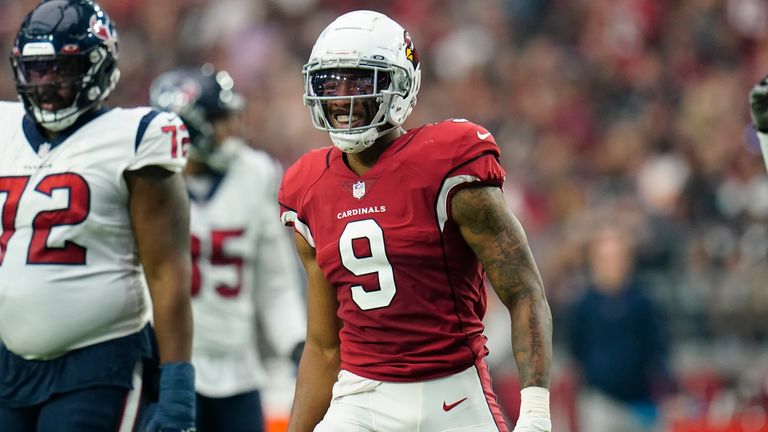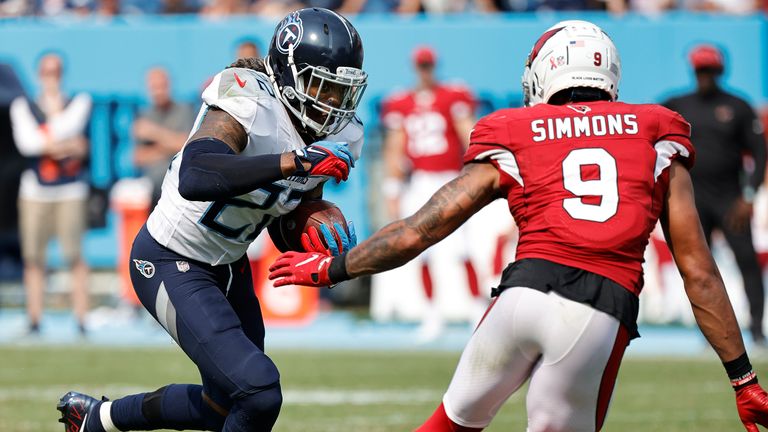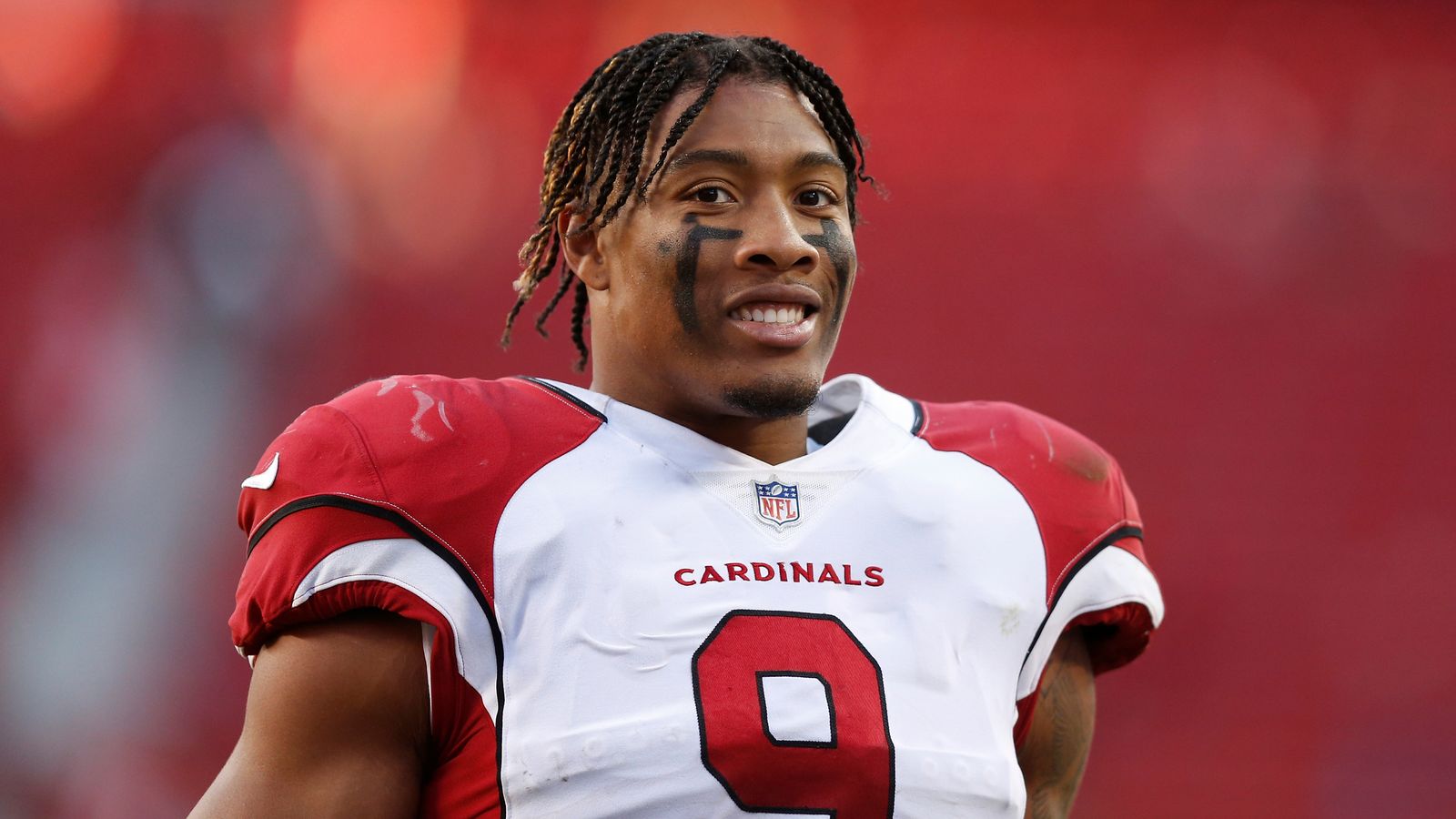Isaiah Simmons was the NFL’s new cool but the Arizona Cardinals unicorn’s best is yet to come | NFL News

Arizona Cardinals linebacker Isaiah Simmons
Isaiah Simmons had defensive nerds drooling upon entering the NFL over his ability to do, well, frankly everything. Two seasons in and the Arizona Cardinals continue to twist and turn the Rubik’s Cube in pursuit of game-dictating totality.
That’s not to say he or they are yet to match a few colours, Simmons offering evidence of the multifaceted craft worthy of every ‘Swiss Army Knife’ or ‘Chess piece’-type idiom, but they know there is plenty more to come.
Clemson head coach Dabo Swinney would refer to Simmons as his unicorn, such was the versatility that challenged positional convention with position-less freedom. His timing as such was perfect with the way the NFL was moving and evolving in regards to a demand for more explosive, more athletic defenders with which to muddy a quarterback’s coverage diagnosis through pre and post-snap rotation while having the IQ and flexibility to turn the dial between off-ball linebacker, on-the-line pocket invader and roaming nickel back.
In his final year at college, Simmons played 116 snaps at outside linebacker, 299 at inside linebacker, 262 as a slot cornerback, 132 at free safety and 100 at strong safety, per Pro Football Focus. The result was 104 tackles, 16.5 tackles for loss, eight sacks, three interceptions, eight pass defenses, two forced fumbles and one fumble recovery.
He was college football’s unshackled marvel, prompting the ‘imagine him as a tight end’ fantasising and stealing hearts at the Scouting Combine by becoming the first player since at least 2003 to produce a sub-4.4 second 40-yard dash (4.39), a 38-plus-inch vertical jump (39″) and 11-feet-plus broad jump (11″) at 230-plus pounds.

Simmons’ best is yet to come in Arizona
Isaiah Simmons career stats
| Season | GP | TOT | TFL | SK | INT | PD | FF | FR |
|---|---|---|---|---|---|---|---|---|
| 2020 | 16 (7 starts) | 54 | 4 | 2 | 1 | 2 | 1 | 1 |
| 2021 | 17 (17 starts) | 105 | 4 | 1.5 | 1 | 7 | 4 | 0 |
He encapsulated the league’s do-it-all defensive fad and loomed as something of a factory-built implementer of what Cardinals defensive coordinator Vance Joseph strives to achieve. And so Arizona snapped him up with the eighth overall pick at the 2020 NFL Draft, braced for a potentially bumpy transition but knowing the reward out-weighed the risk.
Simmons arrived entitled as your hybrid linebacker/safety, though the Cardinals would lean primarily towards the former as he played just 33.9 per cent of snaps in an education-focused rookie year. By the end of 2021 that had risen to 92.37 per cent, third-highest on the Arizona defense, as Simmons asserted himself as Joseph’s chief blitzer alongside the continued positional tinkering.
With him came the exotic wrinkles and a menu-full of blended responsibilities as Joseph found himself with licence to alternate between 5-2 and 4-2-5 formations in which he could disguise funky blitz packages and that would trust his flying defenders to play on instinct with the security of high safeties to mop up, albeit rare, misfires.
The 4-2-5 would often revolve around Simmons in the ‘star’, the name Nick Saban gave to the extra defensive back in nickel, as the player with the size and athleticism to combat the risk of tight end or running back mismatches in a light-box invite-the-run scheme.
In a league of two-deep-safety coverages, it pays to have an insurance policy like that of Simmons with his lateral quickness, rangey frame and shut-down speed to patrol soft spots underneath against yards-after-catch threats and mesh designs enforced by a fixation among defensive coordinators on reducing explosive plays downfield.
From time to time, Joseph would line him up as a conventional five-tech rusher or as a decoy nine-tech from which he would be ushered into the flat or into thirds coverage post-snap as a simulated pressure threat; he would incorperate a Double A gap mug by bringing Simmons up to the line of scrimmage with Jordan Hicks, the entry or exit from which might be last minute in a bid to alter a quarterback’s read; he would utilise him as part of an unofficial three-safety look and rotate him in and out of the box, again putting veteran trust in his versatility.
In Simmons, the Cardinals also acquired the perfect spy, with the polished angles and sideline-to-sideline range to swat bootlegging quarterbacks as vertical hazards purposely squeeze them outside the pocket.
For all he has done and can do and will do, his ‘star’ assignment feels the most fitting on the basis of its open-to-interpretation definition. He can blitz from it, he can drift into quarters from it, he can cover the deep overs flooding the league from it, he can fake pressure from it.
In Week One last season, he was darting to take on Derrick Henry one-on-one as a pure tackling box linebacker, in Week 17 he was shadowing wide receivers CeeDee Lamb and Amari Cooper from his ‘star’ spot on early downs. Joseph’s dream.
Such was the trust in Simmons’ coverage expertise that goalline series could see him plug the A-gap on one play before hovering on the edge and following the quick checkdown in the flat.

Simmons lines up a tackle on Titans running back Derrick Henry
That his production is yet to leap off the stats sheet as it did in Clemson is perhaps testament more to like-minded, trait-sharing players like safety Budda Baker – no stranger to rotating down post-snap – more so than the idea of a slow impact.
Linebacker and safety position specifications are blending more than ever; it’s why Landon Collins’ most effective role has long been debated, it’s why Jevon Holland thrives in the Miami Dolphins’ Cover 0 blitz, it’s also why a Baltimore Ravens safety duo of rookie Kyle Hamilton and Marcus Williams is one to fear when paired with a Simmons-like backer in Odafe Oweh.
He is a focal point to a defense that blitzed on 33.6 per cent of drop backs last season (fourth in the NFL) and that ranked third in EPA per play vs. the run, a statistic measuring down-to-down efficiency.
Simmons’ first-step burst leaves guards unable to get out to him in time in outside zone concepts, his finisher conviction at the point of attack is that of a seasoned run asset and his fluidity and speed stamina allows him to pin himself to the hip of pass catchers in long-developing passing plays.
He is slightly different hybrid to a Micah Parsons with whom the league has become besotted, a slightly more subtle hybrid, perhaps courtesy of the Dallas Cowboys linebacker’s opportune, less-anticipated emergence as a demon edge rusher alongside his off-ball duties.
But you can bet on a Brandon Staley feeling slightly envious over not having Simmons with him at the Los Angeles Chargers (where his light box system struggled last season), and the Cleveland Browns hoping their multi-tooled Jeremiah Owusu-Koramoah offers a similar all-action worth.
Losing Chandler Jones during the offseason heightens the expectations of Simmons and his second-year linebacker comrade Zaven Collins, who is tasked with locking down the MIKE job. Joseph made that clear during OTAs as he insisted it was ‘their time’.
The significant jump between year one and two from Simmons promises further progression come September, upon which his talents will be a mainstay and among the league’s most tantalising. For defensive heads, he is a case study to behold.





Pingback: Buy Magic Mushroom Capsules online
Pingback: turkey tail mushroom capsules
Pingback: effects of lsd blotters
Pingback: Webb.org